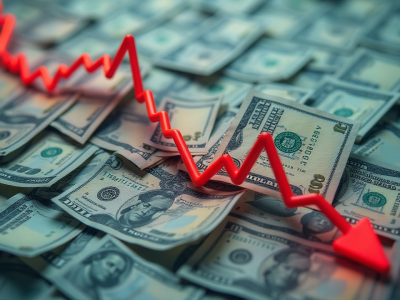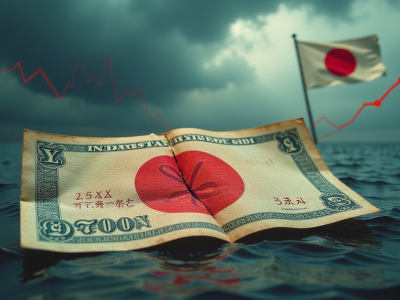
The USD/JPY exchange rate pulled back to 153.70 on Monday morning as the market reacted to a large Japanese stimulus and the potential Bank of Japan (BoJ) and Federal Reserve divergence. It has retreated by almost 2% from its highest point this month.
BoJ decision and government stimulus
The USD/JPY pair pulled back after the recently-elected Japanese prime minister, Shigeru Ishiba, launched a big stimulus to support an economy that is facing substantial headwinds.
The new $250 billion stimulus is targeted at companies, especially those in the technology sector and households. Firms in the AI and semiconductor sectors will receive cash handouts and energy subsidies.
The government also hopes that the package will help to boost consumer spending. For example, it raises the minimum salary threshold from $6,640 to $11,500, a big increase that is intended to boost the well-being of most people.
The new stimulus, which will be unveiled at this week’s supplementary budget statement, will come at a time when most market participants anticipate that the BoJ will deliver the third interest rate hike of the year in December.
Its first interest rate hike was a small 0.10% that removed Japan from negative rates. It was followed by a 0.25% cut in late August that triggered a substantial unwinding from the yen carry trade.
A carry trade is a situation where investors borrow low-interest rate currencies and invest in higher rates ones. For a long time, the Japanese yen has been a highly popular carry trade because the country had negative rates.
Therefore, the spread between the US and Japanese yields has narrowed, making the carry trade less profitable.
FOMC minutes ahead
The USD/JPY exchange rate will also be in focus because of the substantial events and data from the United States.
The most notable one will be minutes from the Federal Reserve, which will provide more color about the last meeting. In it, the FOMC decided to cut rates by 0.25%, bringing the year-to-date cuts to 0.75%.
Therefore, these minutes will shed light on whether the Fed will continue cutting rates or not. Most analysts believe that the bank will pause its cuts in the coming meeting because inflation has remained stubbornly high.
A report by the Bureau of Labor Statistics showed that the headline Consumer Price Index (CPI) jumped from 2.4% in September to 2.6% in October. The core CPI, which excludes the volatile food and energy products, remained at 3.3%.
The other important economic data to watch this week will be the third estimate of the US GDP growth rate for the third quarter and November consumer confidence.
Also, the US will publish the Personal Consumer Expenditure (PCE) report, which is the Federal Reserve’s favourite inflation figure.
All these numbers will help the Fed when it comes to delivering its interest rate decision in the coming meetings.
USD/JPY forecast
The USD/JPY exchange rate has suffered a harsh reversal in the past few days even as the US dollar index has jumped. It retreated from this month’s high of 156.70 to 153.82.
This retreat happened even as the pair formed a golden cross chart pattern as the 50-day and 200-day moving averages crossed each other.
The Relative Strength Index (RSI) and the MACD indicators have all pointed downwards, while the pair is hovering near its 61.8% Fibonacci Retracement level.
It has also formed a rising broadening wedge pattern, a popular reversal sign. Therefore, the USD/JPY pair will likely have a bearish breakout as mean reversion takes place. If this happens, it could slip to the 200-day moving average at 150.
The post USD/JPY: risky pattern forms as yen carry trade unwind fears remain appeared first on Invezz












